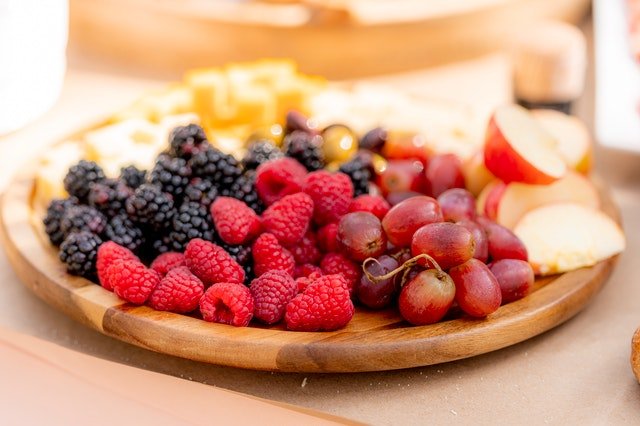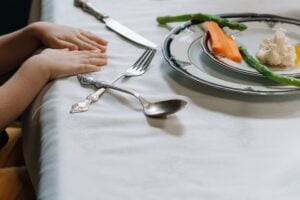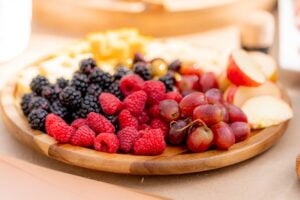YUMMY VALLEY’S SALE 🎁
Free Millet Mojo Snack With Millet Muesli & Porridge Mixes
COD Available for Orders Above ₹299
- Your cart is empty
- Continue Shopping
Vegetables And Fruits For Babies
- Published on:
- Last update: 13 November 2023
- This post has just been created. Stay tuned for updates and additional content.

How To Introduce Baby To Fruits And Vegetables
There has been a lot of activity at our home lately as we prepare for the arrival of a little girl this fall. I feel like I’m doing it all over again for the first time because it has been nearly 4 years since we’ve had a baby in the house. This is the time to really buckle down and make my own baby food. I have always wanted to do it, but have not had the time. I know if you are like me, your busy schedule doesn’t just stop to read this, does it? Therefore, I had to find an integration that works with what I’m already doing. So, what did I find? It was extremely easy to do just that. There’s no need to worry about making baby food. If you put your mind to it, you can work it into your routine quite easily. I’m all for that!
Table of Contents
Toggle
When should I introduce solid foods to my baby?
Let’s start with when your baby should first be introduced to solid foods such as vegetables and fruits for babies. Friends and relatives may differ in their opinions regarding when and what to feed your baby, but leading health organizations recommend delaying solid food introduction until after 6 months of age. You can also look for signs in your baby that she’s ready by watching how she watches you eat. Example: Does your baby watch you eat, following the food from the plate to your mouth? How long is it before your baby seems hungry after his scheduled breakfast? Does he sit well on his own without assistance? These signs might mean that your baby is ready to begin eating solid foods.

What are the best types of foods to introduce first?
Let’s say you now know when to introduce solid food to your baby. But what types of foods should you start him with? Most pediatricians recommend grains as the first food for babies, but more and more see the value of fruits and vegetables, as well as meat, as healthy and acceptable first foods. In either case, you need to know which fruits and vegetables are appropriate for your baby and when. You can start with grain cereals or jump straight into vegetables and fruits for babies.
Baby Can Benefit From Vegetables And Fruit As First Food.
Whichever one you choose to try first is up to you. Vegetables are relatively less sweet than fruit, so you might want to introduce them first and let your baby become accustomed to them before introducing something sweeter. It’s also possible to start your baby with sweeter food such as fruits for babies, which will help your baby become more interested in solid foods. When your baby grows, you can introduce vegetables. It really doesn’t matter what route you choose, just be prepared to have patience and a sense of humor.
In addition to this, it’s good to follow the four-day rule, which simply means feeding your baby the same food for four days to determine whether he has an allergy reaction to that particular food. During this time, avoid introducing new foods to your baby so you can pinpoint how they respond to these new foods. During the food introduction process, you can continue feeding your baby this particular food if all is well. As you now know, this is a safe food to introduce.
What Are The Best Ways To Prepare Fruits And Vegetables For My Baby?
While it is nice to have a blender, food processor, Baby Bullet, etc. on hand, I think a fork will do most of the baby food puréeing. I have a magic bullet and I love it, but I think you can do a lot with a good old-fashioned fork. Unless you’re really into that and it’s what gets you excited about the whole thing, there really is no need to go out of your way or spend a fortune on fancy gadgets to make food for your baby. So keep it simple.
Let me give you two great examples of good first foods for your baby, pears and sweet potatoes. It is not much more complex to prepare either of these than using an oven or microwave, and a fork to mash. The following are additional fruits and vegetables that are easy to mash or puree, and also make great first foods:
- Fruit for babies: bananas, avocados, apples, peaches, plums, blueberries, cherries, apricots, melons & grapes.
- Vegetables for babies: white potatoes, peas, cauliflower and pumpkin. If making homemade baby food with carrots, butternut squash, and green beans please introduce after 6 months of age and use organic produce to minimize potential exposure to nitrates.
As always, consult with your family doctor or pediatrician before giving your baby any new foods. Talk about whether your child has a history of food allergies, or if he has been diagnosed with eczema or asthma. Shop for quality and natural baby food online.
Organic produce is also favored by many parents since it is pesticide-free and safer for babies.

How To Feed Your Baby Solids For The First Time
After preparing your baby’s first solid food, you have now prepared it and are ready to serve it to her. When you and your baby are not stressed, pick a time of day when you can spend a little time focusing on this. If your baby is too hungry, then he or she won’t want to try something new because she’ll be too frustrated. Give them about half as much milk as you normally feed them at the time so that you reduce the stress a bit. For more details, visit the Yummy Valley website.
Whenever they are about 9 months old, you can start giving them solid food twice a day and gradually increase it to three times a day. Keep in mind that every child is different, so you have to work with each one at their own pace. The primary source of nutrition for your baby will still be breast milk and/or infant formula throughout the first year. Ideally, you should start with solids and then move on to nursing or nursing bottles once your child is ready.
Feed her one bite at a time with a spoon. Now the fun begins. It will either be devoured eagerly by them or turned away in disgust, or they will even try it only to spit it out all over them. Keeping your tone and attitude cheerful will help your baby perceive any frustration. Continue to try until you feel that your baby is finished with it.
Veggies and Fruits: Baby Food
When your baby is a baby, serving sizes for meals do not have to be very large. You can start with a spoonful of fruits and vegetables, gradually advancing to 14-6 cups a day in 2-3 feedings. Try the same food again the next day if your child does not like it. Do not force her to eat more if she doesn’t like it.
As long as your baby’s saliva has not come into contact with leftover baby food, it is safe to store it in the refrigerator. Make sure your refrigerator is set below 40 degrees. High temperatures can introduce bacteria into the refrigerator. After it is prepared, you should put it in the refrigerator for about 24 hours.
Take a deep breath and relax. Eating solid foods is a thrilling adventure for you and your baby. Take a deep breath and enjoy this special time with your baby as it is an exploratory time for you both. Take a breather when it is time to settle down.
Reference: Baby food podcast.
Images: Pexels

